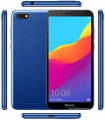Huawei Nexus 6P Prices
Important Note.
- All prices are in Pakistani Rupee (PKR)
- Prices may vary at stores and our effort will be to provide you with the updated prices.
- The latest price of Huawei Nexus 6P was obtained on 17 مئی, 2019. The prices at the original stores had been updated on the respective mentioned dates.
- Find out WhatMobile price has dropped in Pakistan by selecting Notify Price Drop button
- Find out WhatMobile has better specifications by clicking Add To Compare Button find out what Mobile has better reviews by visiting our reviews section
- Find out WhatMobile is cheaper on which retailer by clicking Compare prices from retailers button
Search Terms
- Huawei Nexus 6P
Specifications
| GENERAL | |
| 2G Network | GSM 850 / 900 / 1800 / 1900 - all models CDMA 800 / 1900 - all models |
|---|---|
| 3G Network | HSDPA 800 / 850 / 900 / 1700 / 1800 / 1900 / 2100 - Global model HSDPA 850 / 900 / 1700 / 1900 / 2100 - American model |
| 4G Network | LTE band 1(2100), 2(1900), 3(1800), 4(1700/2100), 5(850), 7(2600), 8(900), 9(1800), 17(700), 19(800), 20(800), 28(700), 38(2600), 39(1900), 40(2300), 41(2500) - Global model |
| Sim | Nano-SIM |
| Announced | 18/09/2015 |
| Status | Available. Released 2015, September |
| BODY | |
| Dimensions | 159.3 x 77.8 x 7.3 mm (6.27 x 3.06 x 0.29 in) |
| Weight | 178 g (6.28 oz) |
| DISPLAY | |
| Display Size | 5.7 inches, 88.5 cm2 (~71.4% screen-to-body ratio) |
| Resolution | 1440 x 2560 pixels, 16:9 ratio (~518 ppi density) |
| MultiTouch | Yes |
| Protection | Corning Gorilla Glass 4, oleophobic coating |
| SOUND | |
| AlertTypes | Vibration; MP3, WAV ringtones |
| LoudSpeaker | Yes, with front stereo speakers |
| 3.5mm jack | Yes - 24-bit/96kHz - Active noise cancellation with dedicated mic |
| MEMORY | |
| CardSlot | No |
| Internal | 32 GB, 3 GB RAM |
| DATA | |
| GPRS | Yes |
| EDGE | Yes |
| Speed | HSPA 42.2/5.76 Mbps, LTE-A (2CA) Cat6 300/50 Mbps |
| WLAN | Wi-Fi 802.11 a/b/g/n/ac, dual-band, Wi-Fi Direct, DLNA, hotspot |
| Blue Tooth | 4.2, A2DP, LE |
| NFC | Yes |
| USB | 2.0, Type-C 1.0 reversible connector |
| CAMERA | |
| Camera Primary | 12.3 MP (f/2.0, 1/2.3", 1.55 µm), laser autofocus, dual-LED dual-tone flash |
| Camera Features | Geo-tagging, touch focus, face detection, HDR, panorama |
| CameraVideo | 2160p@30fps, 720p@240fps |
| CameraSecondary | 8 MP, f/2.4, 1080p@30fps |
| FEATURES | |
| Processor Cores | Octa-Core |
| OS | Android 6.0 (Marshmallow), upgradable to Android 8.0 (Oreo) |
| CPU | Octa-core (4x1.55 GHz Cortex-A53 & 4x2.0 GHz Cortex-A57) |
| Sensors | Fingerprint (rear-mounted), accelerometer, gyro, proximity, compass, barometer |
| Messaging | SMS(threaded view), MMS, Email, Push Mail, IM |
| Browser | HTML5 |
| Radio | No |
| GPS | Yes, with A-GPS, GLONASS |
| Colors | Aluminium, Graphite, Frost |
| Others | - Fast charging - MP4/H.264 player - MP3/WAV/eAAC+ player - Photo/video editor - Document editor |
| BATTERY | |
| Battery | Non-removable Li-Po 3450 mAh battery |
| StandBy | Up to 440 h (3G) |
| TalkTime | Up to 23 h (3G) |
| MISC | |
| SARUS | 1.49 W/kg (head) 0.81 W/kg (body) |
| SAREU | 1.17 W/kg (head) 0.54 W/kg (body) |
Reviews
Introduction, design and display
The new Nexus handsets have arrived, and along with the Nexus 5X we've also been treated to the Nexus 6P – the second generation phablet from Google.
While the Nexus 6 was built by Motorola, Google has switched manufacturers for the 6P with Huawei being drafted in for its first Nexus device.
The Chinese manufacturer has been slowly growing its presence in Western markets and will hope its Nexus project can help boosts its brand outside of Asia.
As for Google, it looks set to really drive forward it's now two-pronged attack on the mobile market. The Nexus 6 was a decent phone, but it had a few flaws. Is the Nexus 6P an improvement? I've grabbed it with both hands to try and find out.
Design
The Nexus 6 was a big phone. It was also heavy. And that made it a bit of a beast to handle. Thankfully, Google and Huawei appear to have noticed this, and the Nexus 6P is a little more manageable.
Screen size has dropped from 5.96 inches to 5.7 inches, which in turn sees the handset's dimensions reduce in both width and thickness. This allows the Nexus 6P to sit more comfortably in the hand, although you'll still notice its heft.
The rounded edges on the rear allow it to snuggle into your palm a little more easily, yet I found it tricky to reach all areas of the screen with just one hand.
For peace of mind, I found a two handed approach much more reassuring, especially as the all metal frame offers little in the way of grip. It slides around in the hand in a similar fashion to the iPhone 6S Plus.
That said, the metal unibody does provide a level of premium appeal to handset, and it certainly sets it apart from the plastic-clad Nexus 5X. The 'P' in the name standards for premium, by the way - not Plus, Power or Penis.
This is the first time we've had an all-metal Nexus device, and the premium tag goes some way to explaining the handset's $499 (£449) price tag for the 32GB model. If you want 64GB or 128GB of space inside, you're looking at $549 (£499) and $649 (£579) respectively.
On the front, you get dual, front-facing speakers above and below the display, while on the rear a circular fingerprint scanner sits centrally. Google calls it Nexus Imprint.
Google has built in fingerprint scanning smarts to Android Marshmallow, and it's made sure its two new handsets take full advantage of the integration.
Then there's possibly the most contentious design aspect of the Nexus 6P. The bulge.
Protruding smartphone cameras are nothing new, but the bulge on the 6P is bigger than most – and that's not necessarily a good thing. It actually only protrudes a little from the body of the phone, but it's the commanding width that makes it look a little odd.
The large black strip at the top of the handset houses the 12MP camera and flash, but it feels excessive and I, for one, am not sold on this particular aesthetic.
It's reminiscent of the questionable stylings of the ZTE Grand S – a handset I witnessed at CES 2013. Almost three years on and it's being rehashed by another Chinese firm. Hmm.
Moving focus to the base of the Nexus 6P, you'll find a USB-C port, rather than the standard microUSB connector. This is the latest connection type for mobile devices, and it's already debuted on the OnePlus 2.
This allows you to plug in your charging cable either way round, making that fumble in dark after you get into bed a little easier. It's something Apple's Lightning cable has offered for a while now, but it's good to see the Android fleet finally jumping onboard.
Display
The 5.7-inch display looks shiny and colorful, and is extremely responsive under touch. The QHD resolution means everything is exceptionally sharp on screen, while the AMOLED technology makes colors bright and vibrant.
It's not quite as impressive as Samsung's Super AMOLED displays, but the 2,560 x 1,440, 525ppi screen on the Nexus 6P is one of the best around.
It's protected by Gorilla Glass 4, which should hopefully see it survive a number of knocks, which in turn is coated in fingerprint and smudge resistant, oleophobic – or oil-repellant – coating.
The Nexus 6P certainly isn't immune to marks though, and even during my swift hands on time with the handset I had to wipe the screen a few times.
Camera, interface, battery and early verdict
Camera
Google has made a bit of a song and a dance about the Sony-made 12.3MP camera it's bolted onto the rear of the Nexus 6P and Nexus 5X.
The new lens and sensor have bigged up the Nexus phones' indoor and low light potential, while Google maintains they'll still do a decent job outdoors as well.
There are a couple of reasons for this. First up, the 1.55-micron sensor means the pixels inside the Nexus 6P camera are larger than those in the snappers of the old Nexus 6 and iPhone 6S Plus.
They aren't the largest though, with the iPhone 5S actually having bigger pixels in its 8MP camera, while the ultrapixel technology from HTC outdoes all of them.
Larger pixels means the camera can pull in more light, allowing it to "see" more in darker conditions. That, combined with its laser autofocus means less camera shake, fewer blurred shots and better low light performance.
From my quick play with the camera on the demo booth, the Nexus 6P was certainly quick at snapping pics, but you'll have to wait for our full review to see how it fares in a variety of conditions.
Round the front the Nexus 6P provides you with an 8MP with HDR+, for some top notch selfie action.
Interface
The Nexus 6P comes running the very latest version of Google's mobile platform, Android 6.0 Marshmallow.
It brings with it improved Google Now functionality, fingerprint scanning smarts, better battery life and 'Now on Tap', a sort of mini Google Now for within apps which can be accessed by holding the home key.
I found Marshmallow ran smoothly on the Nexus 6P, thanks to the punchy Snapdragon 810 processor and 3GB of RAM, ensuring the handset has more than enough power.
Apps loaded quickly, navigation was slick and the Android experience was also highly familiar, with little in the way of design changes between Marshmallow and Lollipop.
Early verdict
The Nexus 6P is a powerful, feature-packed smartphone with a premium design and fresh new operating system.
There are still a few questions over the design in regards to the wide camera bulge on the rear, and it will be interesting to see how the camera holds up during our full review – but this is a phone I very much like.
It'll likely be too big for some, but for those looking for a smartphone with a lot of screen real estate, a wide range of features, premium finish and a price tag which undercuts some of the competition, the Nexus 6P is an exciting prospect.
Write Your Own Review
My Recent Reviews
- Be first to post review for this product.
comments powered by Disqus








.jpg)


.jpg)
.jpg)
-16-GB.jpg)

-32-GB.jpg)













